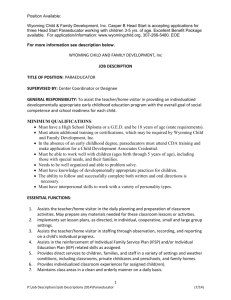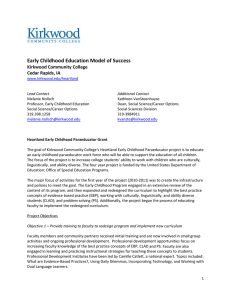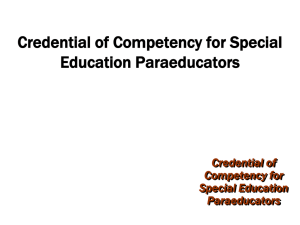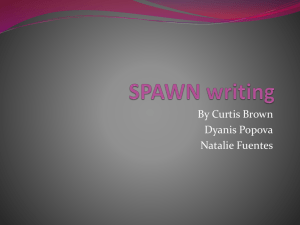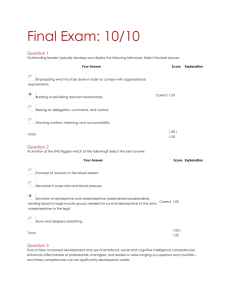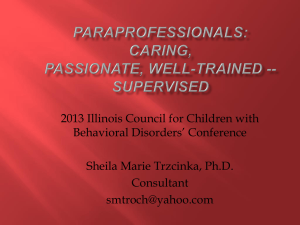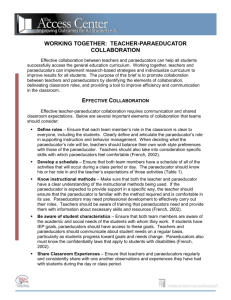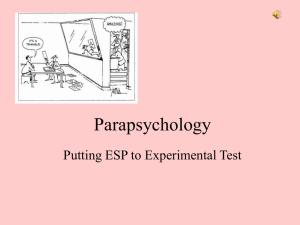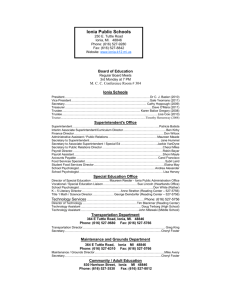ParaProfessional Training - Big East Educational Cooperative
advertisement
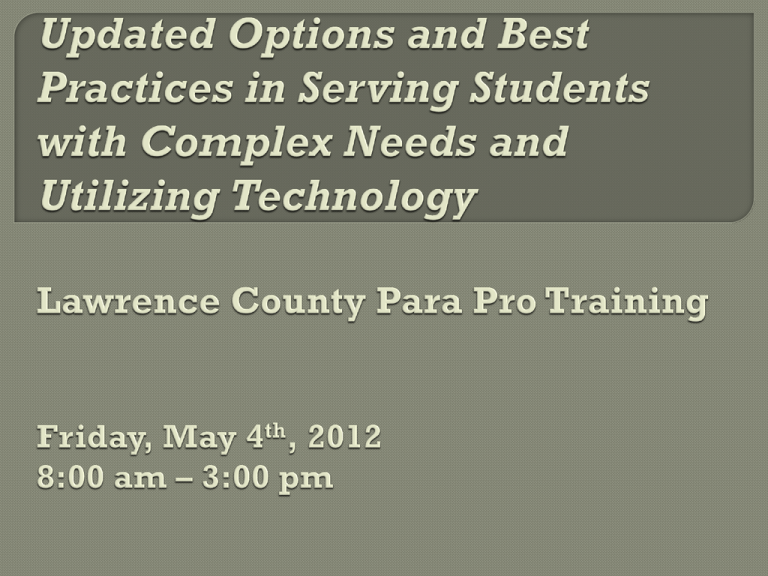
"The range and flexibility of paraeducator positions make it difficult for most folks to understand exactly where our role begins and ends. We are the mortar that fits where it needs to fit to keep the whole structure together." Sandie Blankenship, Special Education Paraeducator, North Kingstown, Rhode Island We comprise 46 percent of NEA ESP members -- more than 151,000 members 81 percent of us work full time 66 percent of us do not have an advanced degree, but 38 percent of us plan to earn one within the next four years 85 percent of us have attended professional development training in the past two years 12 percent of us are currently attending school or college 71 percent of us work with special education students 63 percent of us are paid on an hourly basis, with an average wage of $10.95 per hour *Source: 2002 Status of NEA K-12 ESP Membership Study • • • • • Lost in space Isolated Rely on teachers for all direction Lack of common sense Just don’t get it Bottom Line: Go about your duties mindfully, not mindlessly. If there is some aspect of the job that you don’t understand, find out more about it. interests, strengths, disability, functioning levels, adaptations, processing time, executive functioning Getting To Learning Know Your Student.pdf Style Protocol ParaEducator Student Checklists.doc Instructional Technology Assistive Technology https://atcloud.wikispaces.com/ • • • • Repeats everything the teacher says No original thinking Teaches to the students weakness Does not utilize provided accommodations and supports Bottom Line: Facilitate attention to, and participation in asks, rather than merely repeat what the teacher just said. • • • • Ego and Attitude A thorn in everyone’s side “I already do that” Stress and strain on the classroom Bottom Line: There’s no place for this type of closed minded arrogance in the education of students with or without special needs. No matter how much knowledge or experience an individual has, there is always room for improvement. • • • • • Selfless, well-intentioned All things to the student The “care and feeding” of Learned helplessness Promotes prompt dependency Hinders student competency Bottom Line: Promote independence by only stepping in when additional supports and prompts are needed to facilitate their student’s attention and participation. • • • • Opposite of helicopter para The classroom is not a priority Lack the “substance” to get the job done Set the stage for the Fire Fighter Bottom Line: Take an interest in the classroom environment. Be proactive rather than reactive. • • • • • Quick response para Armed with “tools of trade” Not fully aware of the situation Concerned with “putting out the fire” Not concerned with the “why” Bottom Line: Watch for signs of impending “disaster”, and step in before the behavior escalates and the “troops” are mobilized. • • • • Directive rather than facilitative Miss rich opportunities in all settings Take over the interactive role of the child Block interactions from occurring Bottom Line: Facilitate attention to, and participation in asks, rather than interrupt and/or redirect interactions. • • • • Programmed by some outside force Get the job done at all costs Task oriented rather than student oriented Follow their own flight plans regardless of the ground conditions Bottom Line: Make the changes needed to accommodate your students’ needs. • Assumes the whole is greater than the sum of its parts • Have an almost intuitive understanding of student needs • Perform duties and responsibilities without prompts • Mastered the art of reading student cues • Promote independence • Evidence a willingness to learn • Maintain excellent work relationships with others • Meshes the art and science of support www.autisminternetmodules.org http://www.thewatsoninstitute.org http://cuip.uchicago.edu/wit/2000/team s/onceupon/readaloudstrategies.html KPAStudyGuideREVISED2ndEdition6710. pdf http://www.bigeastcoop.org Choice, opened sentence, systematic, age appropriate, first/ then, short sentences on step at time and give processing time to respond, prompting, Time timers/ internet digital timers Graphic Reactive Organizers strategies (how to put out a fire)

